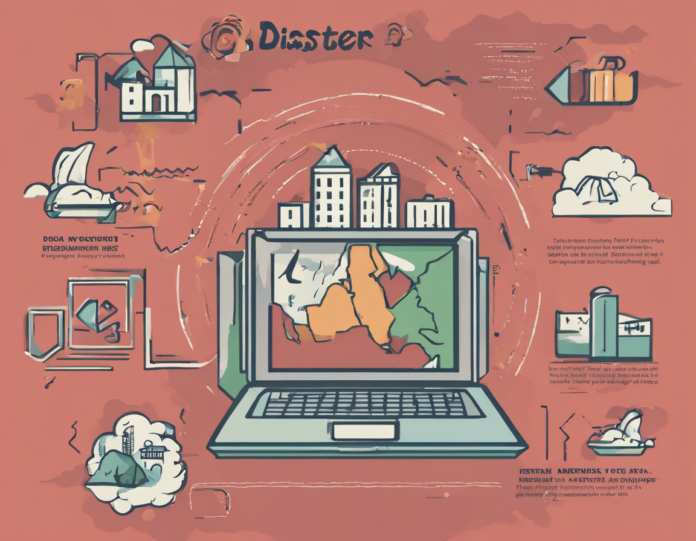Introduction
Disasters can strike at any time and in various forms, from natural calamities like earthquakes, hurricanes, and floods to human-made emergencies such as industrial accidents and terrorist attacks. Being prepared for disasters is crucial to minimize damage, save lives, and expedite recovery efforts. Disaster management is the term used to describe the process of preparing for, responding to, and recovering from disasters. It involves a range of activities, including risk assessment, emergency planning, coordination of emergency services, and community engagement.
Risk Assessment and Planning
The first step in disaster management is conducting a comprehensive risk assessment. This involves identifying potential hazards in your area, assessing their likelihood and impact, and determining vulnerable populations and infrastructure. Based on the risk assessment, a disaster management plan should be developed. This plan should outline the roles and responsibilities of key stakeholders, communication protocols, evacuation procedures, emergency shelter locations, resource management, and post-disaster recovery strategies.
Emergency Response
During a disaster, effective communication is crucial. Emergency responders must be able to communicate with each other, as well as with the public, to coordinate rescue and relief efforts. Having a communication plan in place, including backup systems in case primary communication channels are disrupted, is essential. Training emergency responders and conducting regular drills can help ensure a swift and coordinated response when disaster strikes.
Resource Management
Managing resources during a disaster is a complex task. Key resources that may be required include personnel, equipment, medical supplies, food, water, and shelter. Effective resource management involves pre-positioning critical supplies, establishing mutual aid agreements with neighboring jurisdictions, and coordinating with state and federal agencies for additional support. Maintaining an inventory of resources, tracking their deployment, and ensuring accountability are also important aspects of resource management.
Community Engagement
Engaging the community is vital for effective disaster management. Community members should be educated about potential hazards, how to prepare for disasters, and what to do during an emergency. Community organizations, such as neighborhood associations, religious groups, and schools, can play a key role in disseminating information and organizing response activities. Inclusive planning that takes into account the needs of all community members, including vulnerable populations such as the elderly, children, and people with disabilities, is essential.
Post-Disaster Recovery
The aftermath of a disaster can be chaotic and overwhelming. Post-disaster recovery efforts are aimed at restoring normalcy, rebuilding infrastructure, and helping communities recover and heal. Key components of post-disaster recovery include conducting damage assessments, prioritizing recovery actions, securing funding for rebuilding efforts, providing psychosocial support to survivors, and evaluating the effectiveness of response and recovery activities.
Lessons Learned and Continuous Improvement
Disasters often reveal gaps and weaknesses in emergency response systems. After a disaster, it is essential to conduct a lessons learned review to identify areas for improvement. This process should include gathering feedback from emergency responders, community members, and other stakeholders, analyzing response and recovery data, and revising the disaster management plan accordingly. Continuous improvement is key to building resilience and ensuring better preparedness for future disasters.
Conclusion
Disaster management is a complex and dynamic process that requires careful planning, effective coordination, and ongoing community engagement. By conducting risk assessments, developing comprehensive plans, training emergency responders, and engaging the community, we can enhance our preparedness and resilience in the face of disasters. Post-disaster recovery efforts are equally important in helping communities rebuild and recover. By learning from past experiences and continuously improving our disaster management practices, we can better protect lives and property when disaster strikes.
Frequently Asked Questions (FAQs)
1. What are the key components of a disaster management plan?
A disaster management plan should include risk assessments, emergency response protocols, communication plans, resource management strategies, community engagement strategies, and post-disaster recovery plans.
2. How can I assess the risk of disasters in my area?
You can assess the risk of disasters in your area by researching historical disaster data, consulting with local emergency management agencies, conducting vulnerability assessments, and engaging with community members to gather insights.
3. What should I include in my emergency communication plan?
An emergency communication plan should include primary communication channels, backup communication systems, contact information for key stakeholders, protocols for disseminating information to the public, and procedures for coordinating with other agencies.
4. How can I engage my community in disaster preparedness efforts?
You can engage your community in disaster preparedness efforts by organizing workshops and training sessions, creating neighborhood emergency response teams, utilizing social media and other communication channels to disseminate information, and collaborating with local organizations and schools.
5. What are some best practices for post-disaster recovery?
Best practices for post-disaster recovery include conducting damage assessments promptly, prioritizing recovery actions based on critical needs, securing funding for rebuilding efforts, providing psychosocial support to survivors, and conducting evaluations to identify areas for improvement.
6. How can I ensure the sustainability of my disaster management efforts?
You can ensure the sustainability of your disaster management efforts by institutionalizing disaster preparedness within your organization or community, allocating resources for ongoing training and exercises, fostering partnerships with other agencies and organizations, and regularly reviewing and updating your disaster management plans.
7. What role do volunteers play in disaster management?
Volunteers play a crucial role in disaster management by supporting emergency responders, assisting with evacuation and shelter operations, providing first aid and medical care, engaging in debris removal and cleanup activities, and offering emotional support to survivors.
8. How can technology be leveraged for effective disaster management?
Technology can be leveraged for effective disaster management through the use of emergency alert systems, geographic information systems (GIS) for mapping and situational awareness, social media for public communication, drones for damage assessment, and data analytics for decision-making and resource allocation.
9. What is the difference between mitigation, preparedness, response, and recovery in disaster management?
Mitigation involves reducing the risk and impact of disasters through proactive measures. Preparedness focuses on planning and training to respond effectively to disasters. Response involves the immediate actions taken during and after a disaster. Recovery focuses on restoring communities and rebuilding infrastructure in the aftermath of a disaster.
10. How can businesses and industries prepare for disasters?
Businesses and industries can prepare for disasters by conducting business impact assessments, developing continuity and recovery plans, training employees for emergency response, securing critical data and assets, establishing mutual aid agreements with other businesses, and participating in community-wide preparedness initiatives.




